The test pilot legend made famous in ‘The Right Stuff’ talks to USA TODAY about his life.
Source: Chuck Yeager, still soaring at 89
GRASS VALLEY, Calif. – In the parking lot of this small Sierra Nevada town’s airfield, a decommissioned F-104 Starfighter jet looms over a series of plaques. They honor the exploits of one Charles Elwood Yeager, better known as Chuck.
But while the display has a posthumous vibe, the local legend in question is very much alive and well, sitting in his hanger a few yards up the road.
“I’ll be 90 in February, and while I’m not gonna run no marathon I still hunt and fish and fly,” says Yeager, resting in the shade of a tail-dragger prop plane that he solos in regularly. Parked nearby is an old pickup whose plate reads BELL X1, the rocket plane he rode into history when it broke the sound barrier in 1947.
Living legend is an overused term, but it applies to this American original indelibly captured by Sam Shepard in 1983’s The Right Stuff. Not that Yeager is remotely Hollywood. For him, life boils down to “duty, it’s that simple.”
The General, as he prefers to be called, doesn’t particularly enjoy interviews; navel-gazing isn’t his style. But he agreed to speak with USA TODAY to draw attention to the foundation that bears his name, which supports a scholarship program at Marshall University in his native West Virginia as well as the Young Eagles, a non-profit program chaired by pilot Sully Sullenberger that gets kids airborne (Yeager is Eagles’ chairman emeritus).
MORE: How Yeager got ‘the right stuff’
Yeager may be in a dogfight with Father Time, but his bearing is still ramrod straight. He says his famously acute 20/10 vision remains sharp, although his ears are another matter. “I can’t hear well,” he growls in his iconic drawl. “Damn P-51 Mustang noise. You go sit behind that engine for eight hours, with a leather helmet on. But that’s a handicap that came with the job.”
Job. That three-letter-word has defined Yeager’s life. And what jobs they were, from World War II combat ace to, famously, Air Force test pilot who 65 years ago broke the speed of sound in that Bell X-1, which now hangs in the Smithsonian’s National Air and Space Museum.
Yeager’s name popped back onto the cultural radar Oct. 14, the anniversary of his first supersonic flight. On that day in New Mexico, Austrian skydiver Felix Baumgartner made history when he jumped out of a capsule at nearly 130,000 feet and broke the speed of sound on his descent.
While some 8 million people watched Baumgartner jump live on YouTube, Yeager wasn’t one of them. He was over at Nellis Air Force Base outside of Las Vegas, strapped into a borrowed F-15 fighter. He proceeded to repeat his own record flight by laying down “a big ol’ sonic boom over Edwards” Air Force base in the Mojave desert, where he’d run a pilot training program a half-century ago.
Always on the go, a few days later Yeager was hunting deer with the governor of West Virginia, and a week after that he was grand marshal of the Veterans Day parade in San Diego.
“There’s little question that (first) supersonic feat transcends the feelings any military officer has for their own branch,” says Jack Hawkins, director of the parade in San Diego, a decidedly Navy town. “I have pride in my Marine Corps, but when you look at what Gen. Yeager has done, you have pride in America.”
Often imitated, never duplicated
Yeager’s place in history “is secure,” says Bob van der Linden, chairman of the aeronautics department of the National Air and Space Museum, noting that Yeager laid the groundwork for a historic test pilot program that eventually trained NASA’s astronauts and in the process created a legendary template.
“He became so iconic that it seemed every test pilot after him had to affect some sort of drawl, down to many commercial pilots you hear on the intercom today,” says van der Linden. “He was that aw-shucks guy from the country who knew machines intimately. And while he wasn’t known outside the military for a long time, The Right Stuff changed all that.”
That 1979 Tom Wolfe book-turned-movie starred Shepard as a taciturn, rugged and fiercely independent maverick who respected authority but never second-guessed his gut. Those traits still define the man. A few hours in Yeager’s company are a mix of history lesson and lecture.

To wit, he feels Baumgartner was merely “doing what (Col.) Joe (Kittinger, the Austrian’s 84-year-old advisor) did in 1960 (from 102,000 feet), so what’s he proving?” And NASA made a mistake wooing its first astronauts with “a free house (and) a cut of the goddamn Time-Life (publicity contract).”
But wouldn’t the ultimate test pilot have enjoyed going into space? “Sure, but I couldn’t, I only had a high school diploma,” says Yeager. Couldn’t the rules be relaxed? Yeager leans forward in his plastic chair: “Rules aren’t for relaxing. Look, I don’t cry over spilled milk. Everything I did was for duty, not for publicity.”
What Yeager did in 1947 was take a volatile experimental aircraft to a speed that many were convinced would kill him. In subsonic tests that led up to the X-1’s supersonic flight, the plane seemed to lose stability and be on the verge of disintegrating the closer it got to Mach 1.
Undaunted, Yeager and his chief engineer Jack Ridley pioneered the use of a “flying tail,” transforming the rear horizontal stabilizer into an active part of the aircraft. “It took the British, the French and the Soviets five years to find out that little trick,” he says with a laugh. “It gave us a jump on the world.”
Soon everyone knew not only Yeager’s name, but also his effortlessly cool persona in the face of danger. Even today, he describes the day he almost died when the X-1A spun out in 1953 as if it were just a bad day at the office.
After rising at 3 a.m. to go duck hunting, Yeager cheated death in the X-1A. “When I landed they took me to the hospital but I was OK so they let me go home,’ he says. “But I had to drive to L.A. to give a speech at the Army and Navy club. Got home at 2 a.m. and went to bed. That was my day. That’s the way we lived.”
More than just flying
These days, Yeager’s exploits still command reverence, especially among aviators. His website, chuckyeager.com, offers fans signed memorabilia, and his second wife, Victoria, 53, (first wife Glennis died of ovarian cancer in 1990) is hopeful there could be interest in making another movie about the pilot’s life.
“People know about the X-1, of course, but there’s so much more to him than that,” says the former actress who married the general in 2003.
As the sun starts to drop in the mountain sky, Yeager is keen to return to the glorious past. More tales about risking life and limb, told with a casualness that belies the obvious danger.
Wasn’t he ever afraid? “What good does it do to be afraid? It doesn’t help anything,” Yeager says. “You better try and figure out what’s happening and correct it.”
So none of his feats were heroic?
Yeager shrugs. “A lot of it was just being in the right place at the right time.”
With the very right stuff.


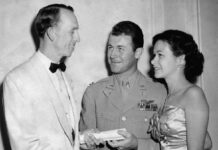
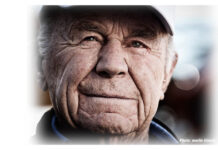

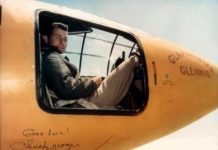
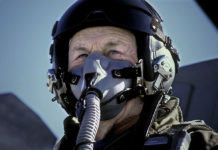


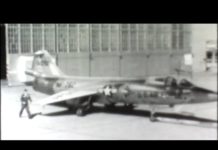



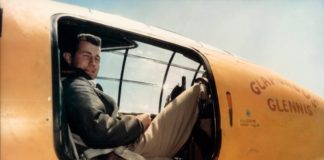
The all flying tail on the Bell X1 was a British invention, by Miles Aircraft the Miles M52